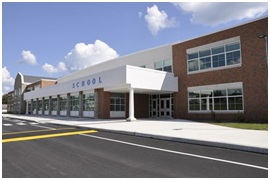
Maintaining an educational environment that is conducive to learning requires, at a minimum, that we keep our school children safe and secure. It’s easier said than done, given the wide range of sizes and types of educational institutions.
High-profile violence in educational environments highlight the urgency of the need for security and safety systems, and the challenges extend beyond preventing the active shooter incidents that grab headlines. In the United States, 79% of public schools recorded that one or more incidents of violence, theft, or other crimes had taken place, amounting to 1.4 million crimes. That translates to a rate of 29 crimes per 1,000 students.
Security is a 24-hour challenge. Protecting schools involves deployment of a range of security and physical hardening tools. Reducing risk requires that access to school buildings be controlled, while also preserving an ‘open’ campus atmosphere that promotes a learning environment. Schools should be an inviting place for students and families, so technology solutions aimed at restricting access should be low-profile and unobtrusive. School security must also be designed in layers, or concentric circles of protection, starting at the school’s perimeter and working inward to secure individual classrooms and other internal areas.
How technology can help
Video surveillance is a technology that is unobtrusive and can promote security beginning at the outermost boundaries of the school environment – at the perimeter and as automobiles drive onto school grounds. Surveillance can keep a silent and constant watch on people coming and going.
Furthermore, incorporating new artificial intelligence (AI) and deep learning technologies is increasing the real-time capabilities of video surveillance to provide early warning of a possible security threat as it enters a campus. AI and deep learning analyse the content of video feeds and provide usable information to security personnel, including analysis of trends and real-time alarms when an event takes place.
In addition to controlling perimeter access, video surveillance incorporating AI can also provide other benefits, such as keeping watch on a school campus after hours – before and after school, or even at the weekend when extra-curricular activities may be taking place. The systems can monitor traffic flow and ensure that only authorised vehicles enter an area. The benefits of AI-driven video systems also enable greater effectiveness of systems that are not being actively monitored. Video feeds are analysed in real-time and alarms can be raised only if there is a problem.
ANPR and biometrics
Automated number plate recognition (ANPR) systems identify the license numbers of cars that enter a school’s parking entrance or gate and can match the numbers to a watch list and provide an alarm. Traffic cameras with deep learning technology can also identify and classify vehicles; in effect, to distinguish between small and large vehicles and even detect a vehicle’s make, model and colour.
Facial recognition can be used at school entrances and gates to promote security of students and staff and to identify known suspects who attempt to enter the building. ‘Blacklist alarm’ technology generates a notification if a known suspect enters.
Feeds from all the cameras can be managed, monitored and stored in an authorised security centre, either located on a campus or in a central location that combines camera feeds from multiple campuses in a school district, for example.
Defence line for a safer learning environment
Systems to maximize school surveillance and security include dedicated, high-performance cameras for event capture, embedded network video recorder for event recording and storage, and a centralised video management platform to unify the system. AI and deep learning technologies automate security processes and provide useful real-time information that extends beyond video images. Deploying these technologies at the perimeter can promote better security campus-wide by preventing danger from entering the learning environment.











